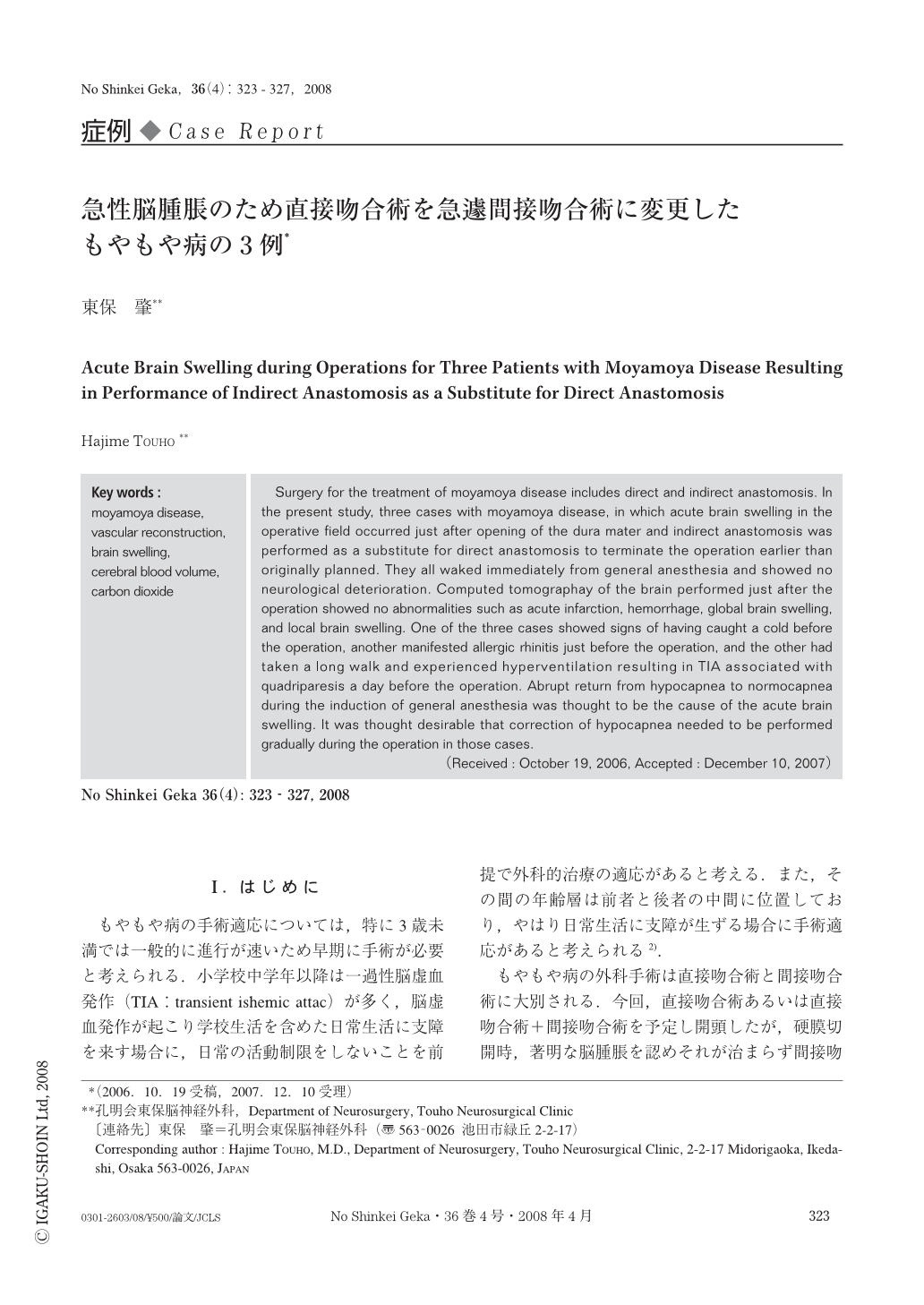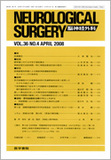Japanese
English
- 有料閲覧
- Abstract 文献概要
- 1ページ目 Look Inside
- 参考文献 Reference
Ⅰ.はじめに
もやもや病の手術適応については,特に3歳未満では一般的に進行が速いため早期に手術が必要と考えられる.小学校中学年以降は一過性脳虚血発作(TIA:transient ishemic attac)が多く,脳虚血発作が起こり学校生活を含めた日常生活に支障を来す場合に,日常の活動制限をしないことを前提で外科的治療の適応があると考える.また,その間の年齢層は前者と後者の中間に位置しており,やはり日常生活に支障が生ずる場合に手術適応があると考えられる2).
もやもや病の外科手術は直接吻合術と間接吻合術に大別される.今回,直接吻合術あるいは直接吻合術+間接吻合術を予定し開頭したが,硬膜切開時,著明な脳腫脹を認めそれが治まらず間接吻合術のみで閉創した3症例を経験したので報告する.
Surgery for the treatment of moyamoya disease includes direct and indirect anastomosis. In the present study, three cases with moyamoya disease, in which acute brain swelling in the operative field occurred just after opening of the dura mater and indirect anastomosis was performed as a substitute for direct anastomosis to terminate the operation earlier than originally planned. They all waked immediately from general anesthesia and showed no neurological deterioration. Computed tomographay of the brain performed just after the operation showed no abnormalities such as acute infarction, hemorrhage, global brain swelling, and local brain swelling. One of the three cases showed signs of having caught a cold before the operation, another manifested allergic rhinitis just before the operation, and the other had taken a long walk and experienced hyperventilation resulting in TIA associated with quadriparesis a day before the operation. Abrupt return from hypocapnea to normocapnea during the induction of general anesthesia was thought to be the cause of the acute brain swelling. It was thought desirable that correction of hypocapnea needed to be performed gradually during the operation in those cases.

Copyright © 2008, Igaku-Shoin Ltd. All rights reserved.


